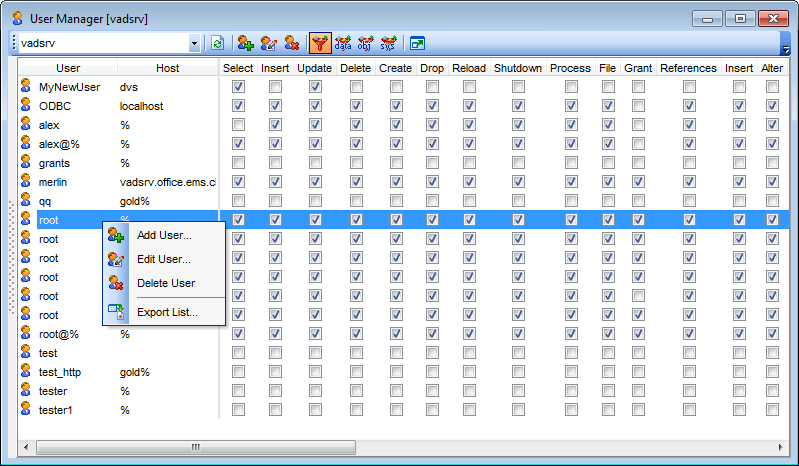Online Documentation for SQL Manager for MySQL
Managing users
If you are not connected to the database server yet, select the host from the Servers drop-down list and you will be prompted for login and password.

The list displays the existing users as a grid with the following columns: User, Host, and the columns indicating the global privileges granted to the user: Select, Insert, Update, Delete, Create, Drop, Reload, Shutdown, Process, File, Grant, References, Index, Alter, Show Database, Super, Create TMP Table, Lock Tables, Execute, Replicate Slave, Replicate Client, Show View, Create View, Create Routine, Alter Routine, Create User, Event, Max. Queries, Max. Updates, Max. Connections.
Click a column caption to sort items by values of this column in the ascending or the descending mode.
To ease managing user privileges you can work with a specific group of privileges at a time. Select required group from the Filter drop-down list that is located on the navigation bar. You can also find filtering buttons on the toolbar: ![]() All privileges,
All privileges, ![]() Data privileges,
Data privileges, ![]() Object privileges,
Object privileges, ![]() System privileges.
System privileges.
Right-click an item within the list to call the context menu allowing you to create a new user and specify its properties using User Editor, edit, delete the selected user, or show/hide columns of the list. Using the context menu you can also export the list of users to any of supported output file formats.
Users management tools are also available through the Navigation bar and toolbar of User Manager.


































































